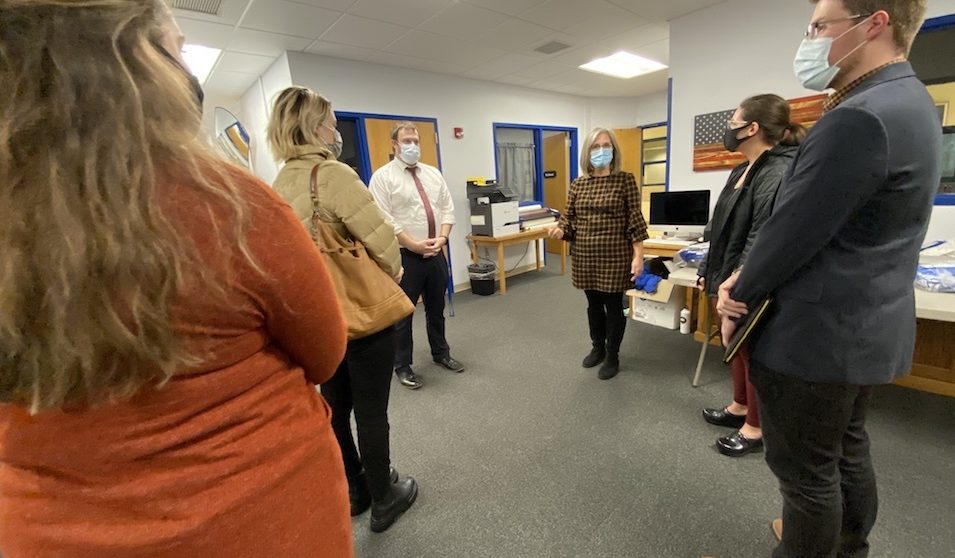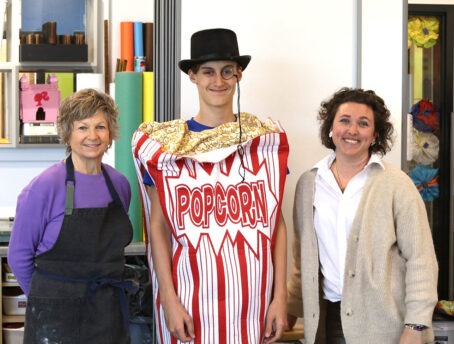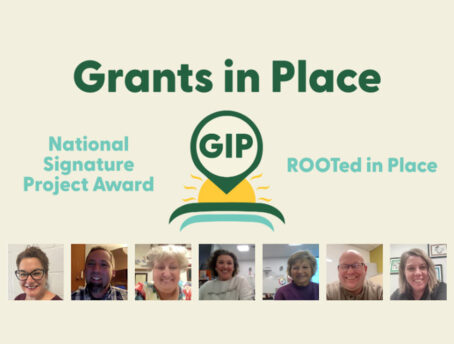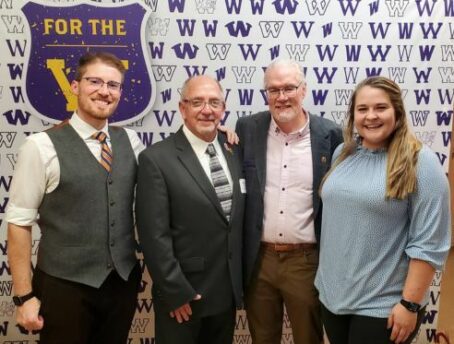Resting atop one of the many hills and ridges of the Wisconsin Driftless, Mineral Point High School (MPHS) has long sought to provide its students with skills-based resources needed to succeed. This drive for excellence inspired staff and students to cultivate a home-grown media and broadcasting program, which allowed them to bolster the school’s daily video announcement program and launch a live streaming and digital communications effort during the pandemic. In partnership with Rural Schools Collaborative, MPHS was awarded one of Compeer Financial’s Rural Schools Innovation Grants to further expand their burgeoning program.
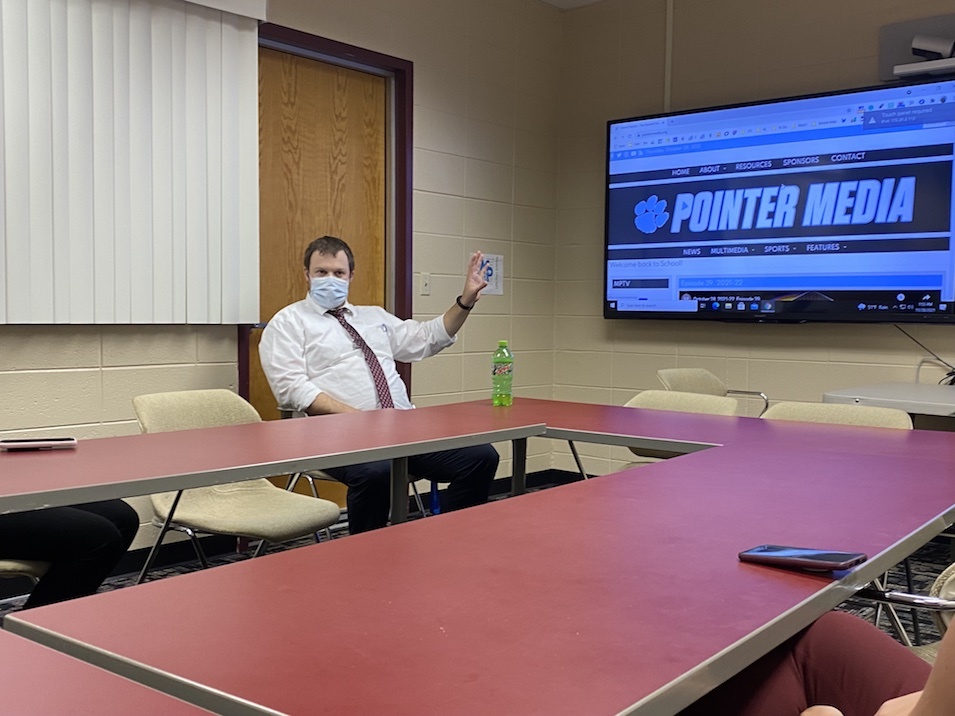
The Rural Schools Collaborative team had the great honor of visiting the high school in late October to see the program first-hand and the exciting new opportunities the grant has afforded them. MPHS Principal, Matt Austin, explains, “The program itself was launched three years ago when we noticed that our kids were getting passed over. So, we started doing what we can to give them opportunities and experience to stand out.” Austin and a group of like-minded teachers set out to find new offerings to bring to MPHS and expand students’ skill and career pathways. Austin continues, “In the spring before we started the program, [a neighboring school district] was doing something like this, and we saw that our media kids were sitting around without much to do. So, we went down, saw what they were doing, and said, ‘We can do this, and we can do more.’”
Determined to bring a media and broadcasting offering to their students, the MPHS team pulled together the basic materials and knowledge needed to launch the program. Kris McCoy, the middle and high school librarian and media technology specialist, and Kristin Staver, a multimedia teacher and the English department chair, began by enrolling in an extensive media course with national experts to learn the skills and training needed to start and sustain the effort. After the staff training, McCoy recalls that “in our beginning year, we had just one iMac and the announcements were filmed on the computer’s built-in webcam.” Even from these humble beginnings, the media course took off and the whole school was enthralled with new video announcements. “By the end of that year, we had a whole green room studio set up,” McCoy adds.
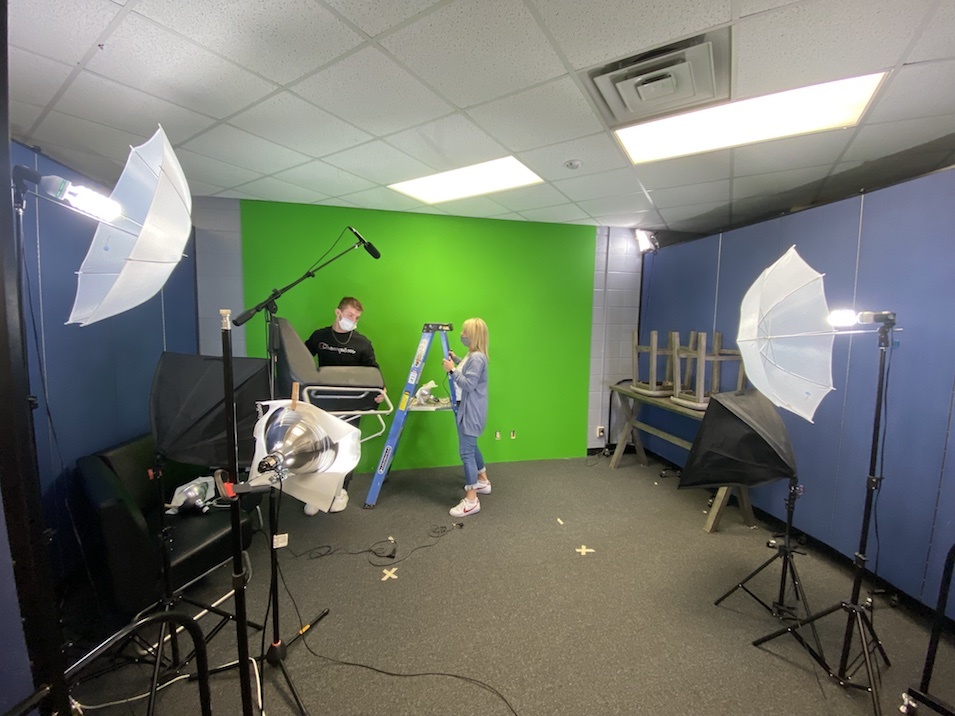
Not long after the program began to truly take off the global pandemic hit. Rather than stymie their efforts, the sudden need to keep students connected, and to engage the larger community more effectively, catapulted the demand for the program staff and students’ expertise. Although students and staff had the skills needed to run a scaled-up operation, the persistent lack of sufficient equipment posed a barrier—until they heard about the Rural Schools Innovation Grant:
“During COVID, there was suddenly this huge request, and need, to do our media coverage live, even though we never did it before,” Matt Austin says, “Then we heard about the grant from our superintendent. We were already looking to expand our media program when we first heard about the grant, so it allowed us to go through with it and build it out.”
Upon being awarded the grant earlier this year, the MPHS media team wasted no time ramping up the program. First, Austin reports, “The grant went to a number of things: a new computer and software to do live streaming, a sound mixer, larger subscriptions to host the expanded live streams, and new headsets.” With new equipment in place, the students and staff enlarged and enriched the specific programming the effort hosts, including: student-led filming and commentary on all sporting events, selling and running ads for local businesses, creating a new music editing course from which students DJ all school dances and games.
With increased investment in MPHS’s media efforts, came increased interest among students to join the program. Kris McCoy excitedly shares that their media program doubled this year.. “We created this course in response to the larger size of students interested, and the goal of it is to train incoming students on the basics of the program so they can take it over as they progress.”
During the Rural Schools Collaborative staff visit, one area of investment the MPHS team proudly showcased was their daily video announcements, the inception and cornerstone of the whole program. Like the rest of their media efforts, the daily announcements benefited greatly from the new equipment and training opportunities afforded by the grant. What were once videos shot by a single computer webcam have grown into a full-fledged studio operation, with cameras, lighting, greenscreens, polished graphics, and a team of student anchors.
Kristin Staver shares about the process for making the daily announcements: “We produce daily video announcements that are about 4-5 minutes long. Students in the 1st hour media class film the segment, and 2nd hour students edit and air the video. Then announcements are played in 2nd or 3rd hour during a quick snack time in the school.”
While most of us remember daily announcements as the monotone report out on school events and updates riveting enough to lull us back to sleep at the beginning of the day, the MPHS “Pointer Media” broadcast is an energetic, student-driven production. Dan Burreson, a social studies teacher and the head basketball coach, takes a lead on writing the scripts. “We really start the week before getting the information we already know, like deadlines, events, lunch schedules, written into the daily scripts. Then, Mrs. Staver and myself continue to tweak the scripts each day,” Burreson details.
MPHS staff have gone to incredible lengths to create and support their media program, but they all are quick to highlight how hard the students work as equal partners in the venture. Burreson reflects that “the kids are the key component here. The work they put into this is incredible.”
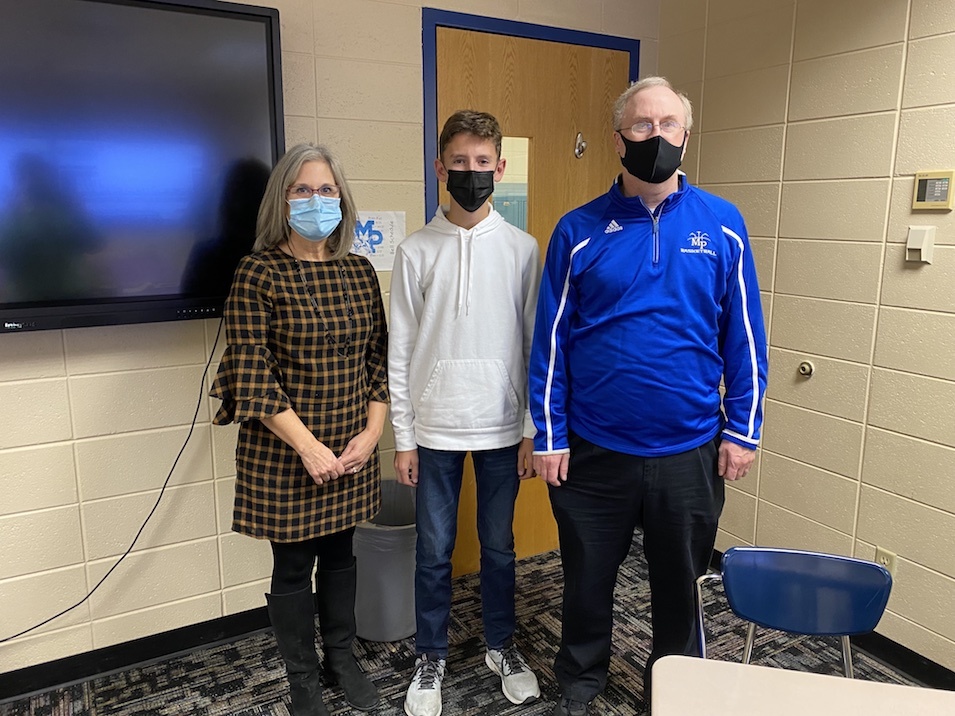
One of the students helping run the program is Matthew. Currently in his first year of high school, Matthew has long been interested in technology and media skills. When the opportunity came to join this in-house effort, he jumped at the chance and has grown to take on a leadership role within the group:
“I’ve always been interested in technology, so I was asked to get involved in 7th grade. I started off doing web design, and most people in the media club start by writing content. Now, I’m doing a lot of social media management and I’m about to launch a podcast. It’s been really exciting getting to learn these skills and, personally, I’ve seen everyone grow from this. It’s a really collaborative effort.”
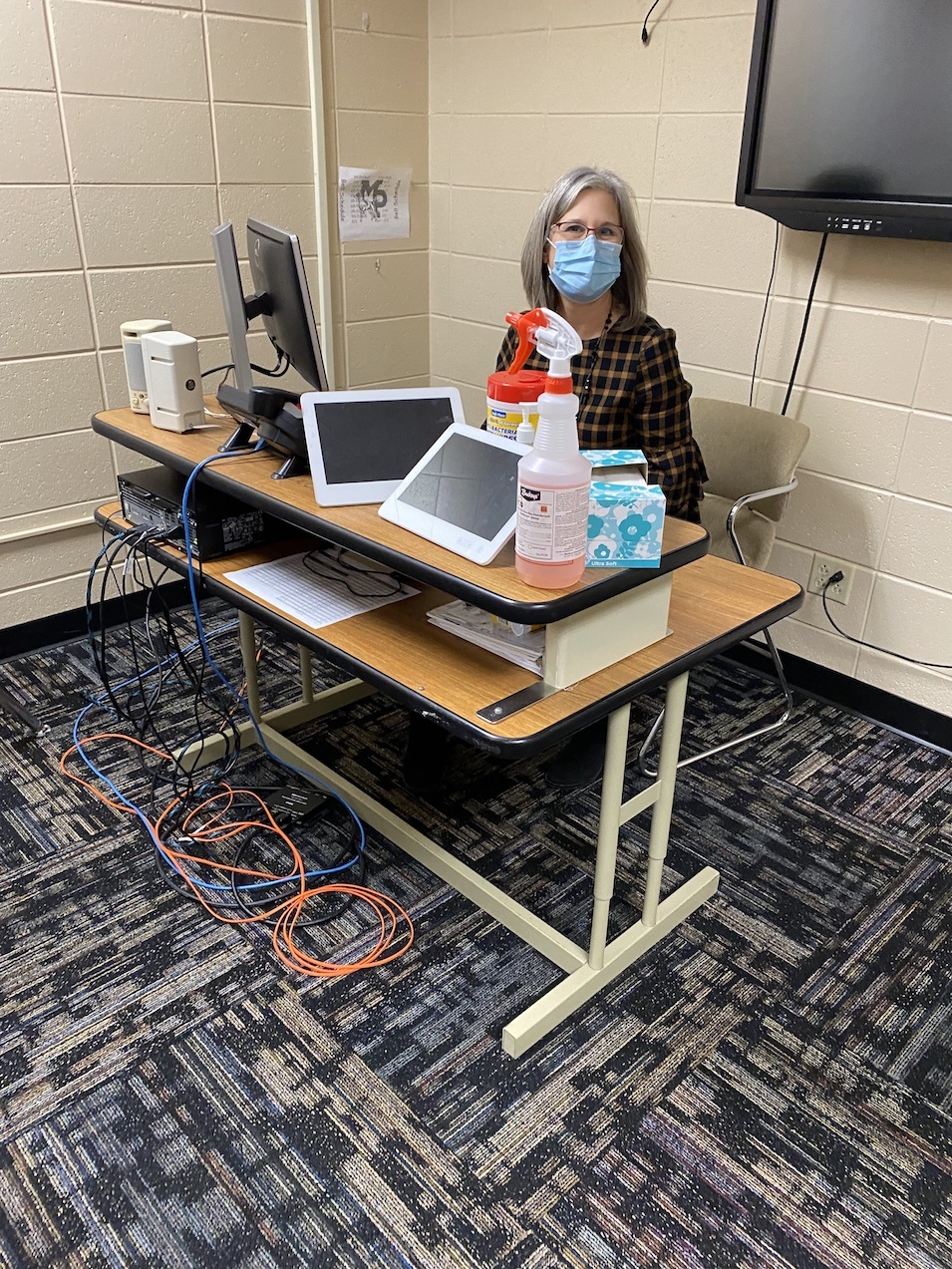
Matthew’s experience mirrors the hopes and visions of the MPHS staff who spearheaded the launch of the program. Kris McCoy affirms that this was the purpose of this grant. “We realized that our kids were going into the world, but you don’t know what you don’t know. So, we wanted to create a media program that would expose kids to this learning experience…Others can now watch this [the daily announcements] and see that what we do isn’t just a project or a grade, it’s a place that’s real world.”
Hoping to redefine their offerings to expand students’ future pathways, a team of committed administrators and teachers came together to launch a media program that revolutionized Mineral Point High School’s creative outreach. With the generous support of Compeer Financial’s Rural Schools Innovation Grant, the MPHS media team has already taken steps to establish their media curricula as a distinguishing feature of the school and its students. Already, these programs have engaged thousands in the community during sporting events, allowed students and families to participate in quintessential school-year events, and even launched the college careers of recent graduates. Sharing their visions for next steps, students and staff are excited for further equipment upgrades, increasing the complexity of their sports coverage, and even beginning live news broadcasting, all of which, Matt Austin admits, will take further learning and investment to achieve. Nevertheless, Kris McCoy echoes the founding philosophy of this effort to express her optimism and enthusiasm moving forward: “You don’t have to be an expert. You just have to get your toes wet."
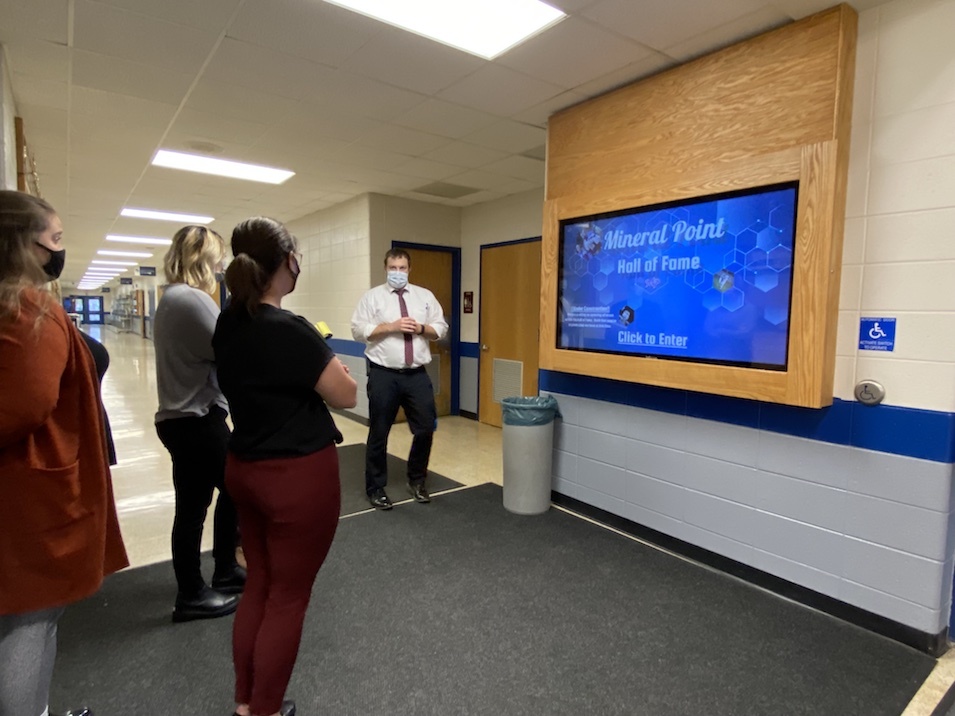
Thank you again to Compeer Financial for their partnership with RSC on the Rural Schools Innovation Grants program! Mineral Point falls in our Driftless Hub anchored by the University of Wisconsin - Platteville's School of Education. We are thrilled to continue supporting these innovative projects in rural schools and are grateful to be able to see firsthand the impact they bring to rural communities.

About the Fund for Rural America
The Compeer Financial Fund for Rural America is the corporate giving program of Compeer Financial, structured to support Compeer Financial’s mission to enrich agriculture and rural America. Compeer Financial’s Board of Directors has dedicated one percent of annual net earnings to support the Fund’s focus areas of agricultural advocacy and development, agriculture education, cooperative initiatives, rural development and community enrichment; and youth engagement. The Fund is managed by a Board of Trustees, made up of team members from Illinois, Minnesota and Wisconsin and members of the Compeer Financial Board of Directors. More information about opportunities available through the Fund can be found at Compeer.com/giving-back.

